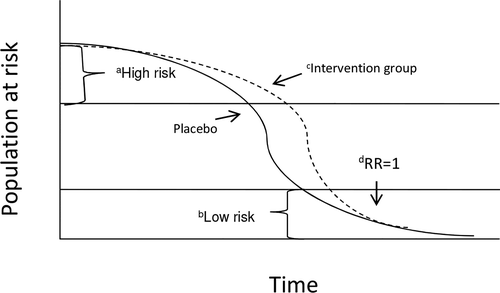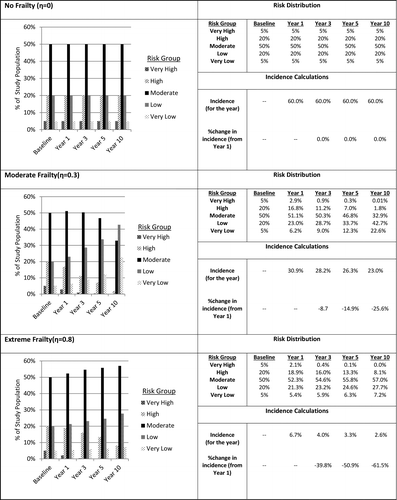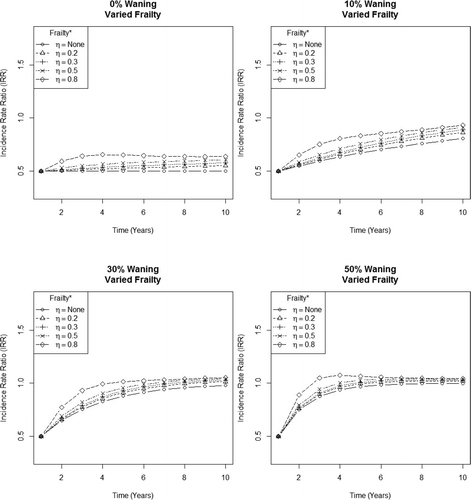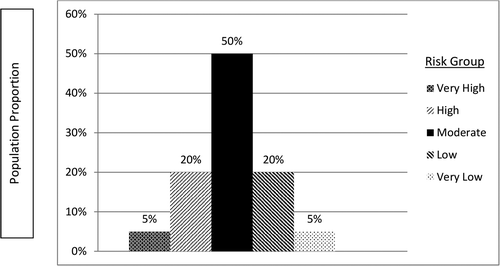Figures & data
Figure 1 Illustration of the potential impact of frailty on rates of decline in the populations at risk (i.e., due to disease incidence) in both the treatment and placebo groups in a hypothetical randomized clinical trial of an effective intervention. aBecause of their high probability of disease, high risk individuals will be removed from the population at risk early in the study. bOnce the high risk individuals are removed, mostly lower risk individuals will remain in the risk population resulting in lower disease incidence at later time points. cSince the intervention is effective (but not perfect) at preventing infection, it will prolong the time before high-risk individuals in the treatment arm will become infected. However, given enough time, only relatively low risk participants will remain in both arms of the study and all participants will eventually become infected and no longer at risk. dAs a result, the time-specific rate ratio will approach 1 over time giving the appearance that the efficacy of the intervention is declining. This process is termed “frailty.”

Figure 3 The five levels of frailty (heterogeneity in infection risk) modeled in the study scenarios ranging from no frailty to extreme frailty.

Figure 4 The risk distributions of a simulated study population in the absence of an intervention, the corresponding disease incidence and percent change in incidence from year 1 at 1, 3, 5, and 10-year follow-up under three levels of frailty.

Figure 5 Estimated incidence rate ratio (IRR) under varying degrees of frailty and waning. *Frailty (heterogeneity in infection risk) is incorporated by sequentially multiplying the infection probability of a higher risk group by 1 ( η (a fixed adjustment factor used to incorporate frailty). A higher value of eta corresponds to greater frailty.

Table 1 Power calculations for each study scenario at varying sample sizes*.

